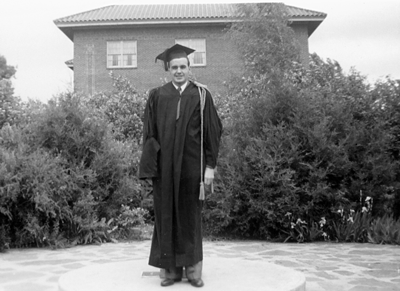The Life of Maurice Hilleman
Maurice Hilleman began life under tragic circumstances in his family’s home on the
banks of the Tongue and Yellowstone Rivers near Miles City, Montana. His twin sister
died in childbirth, and his mother passed away shortly  there after. He was raised by an aunt and uncle on the family farm. From the earliest
of years, Maurice knew what it meant to work hard, beginning at age four when he was
sent to sell strawberries (unsuccessfully) at a local market. As Maurice grew older,
he was responsible for many other duties typically associated with farm life, including
becoming an expert on poultry production (a skill that would later serve him—and the
rest of society—well).
there after. He was raised by an aunt and uncle on the family farm. From the earliest
of years, Maurice knew what it meant to work hard, beginning at age four when he was
sent to sell strawberries (unsuccessfully) at a local market. As Maurice grew older,
he was responsible for many other duties typically associated with farm life, including
becoming an expert on poultry production (a skill that would later serve him—and the
rest of society—well).
His extensive work ethic would eventually pay off. As a recent high school graduate, Maurice had been given a coveted career-track job at the J.C. Penney in Miles City. However, his brother encouraged an opportunity with even greater risk that didn’t include an obvious financial reward at the outset: attending college. And while many high school students might have considered a university closer to home, Maurice Hilleman selected Montana State University. These two decisions—not working after high school, and accepting a scholarship to attend Montana State University—would forever shape Maurice and the lives of millions of others around the world.
After graduating top in his class at MSU, Maurice went on to attend the University of Chicago. Life didn’t become much easier in the Windy City. His studies were rigorous and his professors fierce with their expectations. Thanks to limited personal finances, Maurice ate one meal a day, as evidenced by his 138-pound frame. As a graduate student, his research project eventually helped develop a treatment for chlamydia by discovering it was a bacteria and not a virus. This discovery, remarkable in itself, represented just a glimpse of Dr. Hilleman’s genius and ability.
From the University of Chicago, Dr. Hilleman advanced his career working as a scientist for Walter Reed Army Institute of Research and Merck Pharmaceutical, where he was responsible for creating and producing vaccines that would shape modern day healthcare and, as a result, save millions of lives around the world.
Dr. Hilleman retired from his job at Merck by the companies policy in 1984 at the age of 65. However, Dr. Hilleman's retirement didn't stop him from continuing his life's work. In the years after his retirement, Dr. Hilleman contributed to science as a consultant and mentor dedicated to stopping disease around around the world. World Health Organization (WHO) hired him as an advisor in the world wide fight against disease. In 1988, President Ronald Regan awarded him the highest science award given in the U.S., the National Medal of Science.
Dr. Hilleman accomplished his work with great tenacity and even greater humility. Today, he is remembered by many as being one the world’s top scientists who was able to advance global public health through his ethics, values, and hard work—qualities that can be traced back to his Montana roots.
Dr. Hilleman’s work is estimated to save about eight million lives every year. Even at the very end of his life, Dr. Hilleman was fully dedicated to his quest to save the worlds children.
Read More About Maurice Hilleman
- A Forgotten Pioneer of Vaccines,” in the New York Times
- Dr. Hilleman’s New York Times obituary
- Vaccinated: One Man's Quest to Defeat the World's Deadliest Diseases, by Paul Offit
